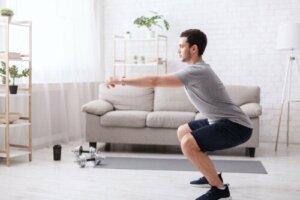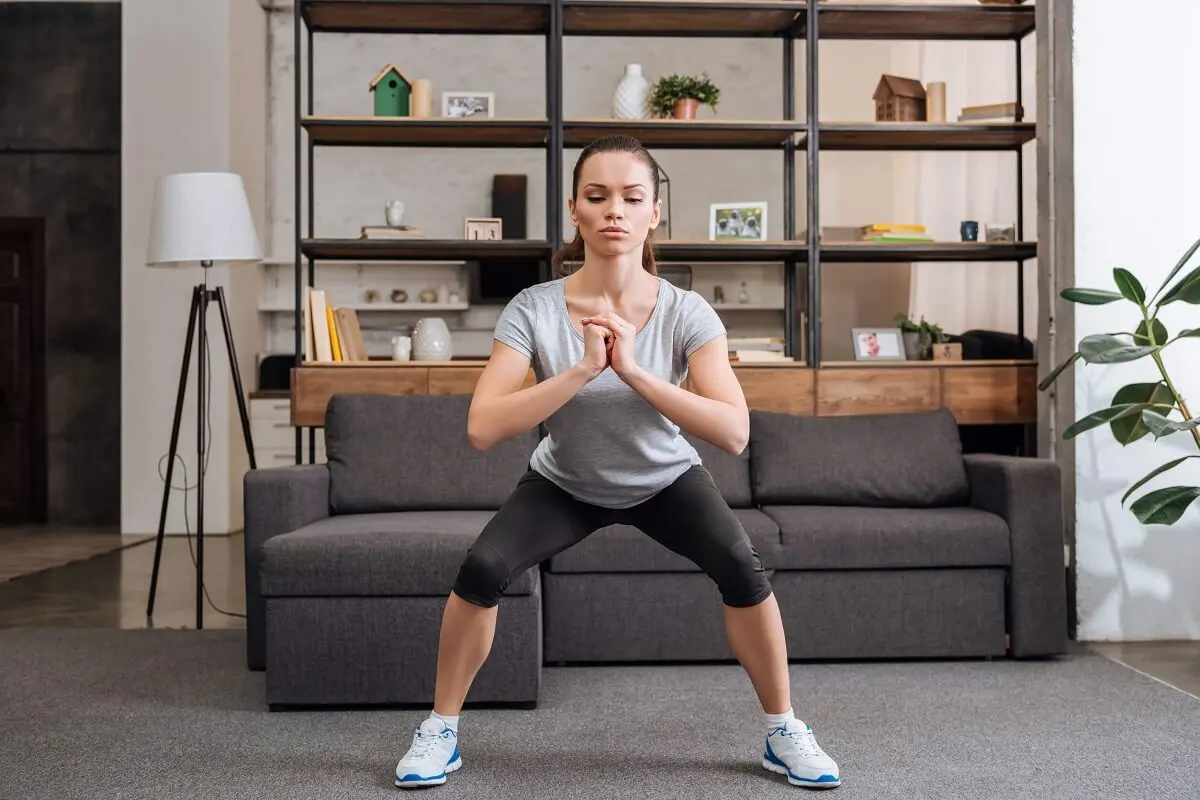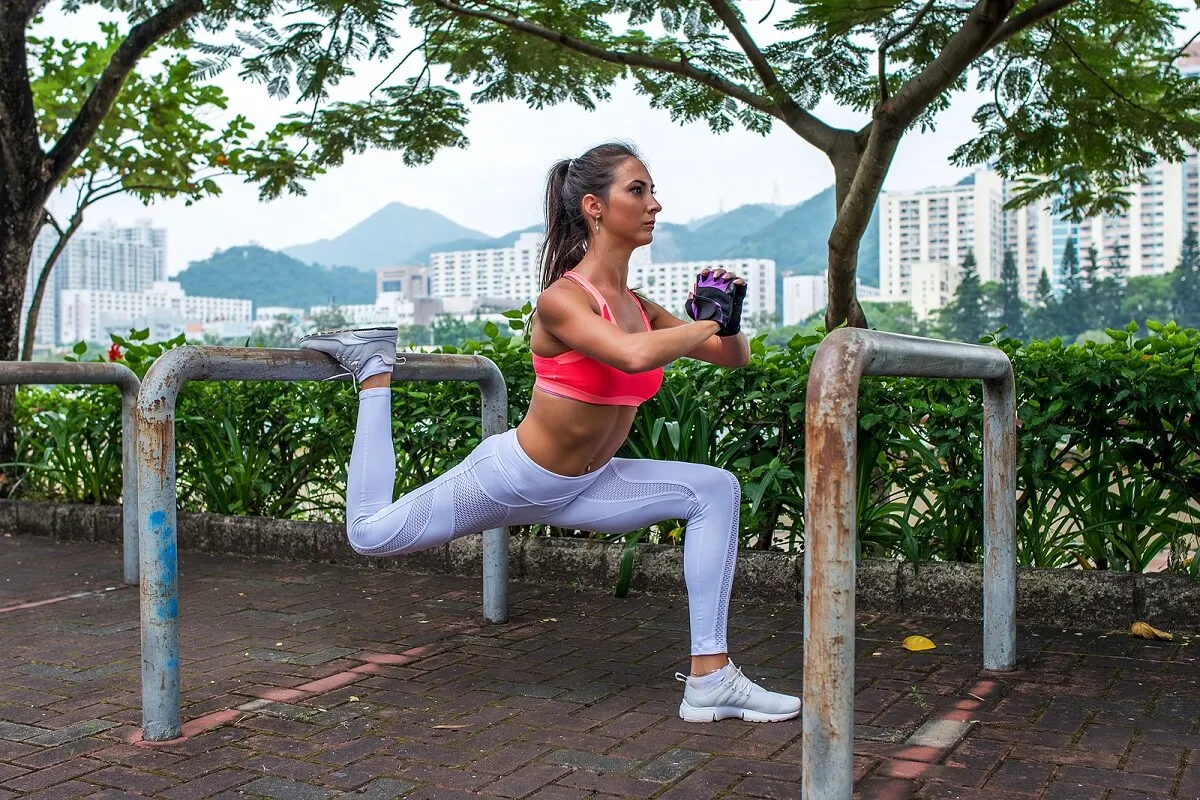5 Tips for Perfect Squats


Reviewed and approved by the nurse Leidy Mora Molina
Have you ever wondered how to do perfect squats? This exercise -in all its modalities – is usually one of the most used in the FITT method, that is, the one that refers to the frequency, intensity, time and type of routines that you should practice for any fitness plan.
To be more precise, it is an activity that involves large muscle groups such as the glutes, quadriceps and almost all the muscles of the legs. In addition, it allows to accelerate the metabolism and to achieve a higher caloric expenditure. In any case, technique and modality have a significant impact on the results.
5 tips for perfect squats
The frequency with which you should practice squats depends on your training plan and the goal you want to achieve. To do it the best way, it pays to put the following tips into practice.
1. Avoid rounding your back
When you execute squats, it is common for you to move your shoulders forward, which makes your back round. To avoid this fault you have to keep your back straight and well aligned.
That is, shoulders back and down, head forward and breathing properly. These facts will help you to preserve a correct posture.

2. The weight should be on the heels
If you perform squats without carrying additional weight this mistake can happen to you, as the lightness of the movement pushes you to lean on your toes. One tactic you can use is to imagine pushing off the ground with your heels to prevent placing your weight forward.
3. Your ideal body depth
Whenever you can maintain correct posture, make the effort to get as low as you can. You know the limits of your body and you will know how, little by little, these limitations are reduced by strengthening your body’s resistance.
The depth of this activity has to rely on the range of motion of your ankles and hips. It also depends on whether the posterior chain musculature is shortened. Anatomically, you may have conditions that limit depth. Be aware of these and work on them.
4. Proper starting posture
We always talk about the importance of spreading the legs wider than hip width apart. Since everybody is different, there is no standard measurement for this, so it is important that you find the most appropriate for you.
You can use a technique to identify your ideal width. This consists of getting quadruped – hands and knees on the floor- to fix the measurement from there.
Once in this position, the next thing to do is to start pulling backwards to see how far you reach until you touch your ankles with your buttocks. This is conditional on your back remaining straight and reaching the maximum limit of your hips.
You have to move your knees together or apart from each other to find the most accurate measurement. When you do, you stand up on that point because you are ready.
5. Take advantage of breathing
Breathing helps you to facilitate the exercise in the right way; it even allows you to move more weight. Before starting the squat, while standing, take a deep breath and hold it in as you go down. As you go up, let it out gently.
By holding your breath on the way down, you maintain tension during the movement and can maintain proper posture.
The benefits of following these tips to do perfect squats
With this exercise, you work many muscle groups that are very strong and important. This movement practices flexion and extension of the main joints of the lower limb, such as the hip, knees and ankles.
Squats will allow you to lift more weight and get a lot of strength in the lower body. It is a simple exercise, which in its basic formula does not require materials and that you can perform anywhere.
Like other forms of physical activity, it also promotes better health for your body. That is, it reduces the risk of cardiovascular disease and overweight.
Recommendations to make your squats more dynamic
The tips for doing perfect squats are applicable to any exercise modality. So, if you get bored by performing the movement in the same way, here are some other ways to do them. The goal is for you to perfect the standard movement and then practice with these variations.
- Back squats. You take the bar over your shoulders and behind your head, holding it on the way down.
- Front squats. These are performed with the same bar, but now across the front of your head, in the shoulder and clavicle area.
- In addition, you have the goblet squats. You practice them with a kettlebell, which you hold with both hands, sticking them to your chest to start lowering.
- Standard squats. The feet are spread wider than shoulder-width apart, with the tips of the toes facing outward.
- Bulgarian squats. You perform them with one foot. Simultaneously, the other foot is supported from behind on a bench or chair.

The perfect squats, a must in any training routine
The practice of different squat modalities has a very positive impact on the training routine. As a study shared in the European Journal of Applied Physiology concludes, it is one of the most effective exercises for developing the muscles of the lower extremities.
All cited sources were thoroughly reviewed by our team to ensure their quality, reliability, currency, and validity. The bibliography of this article was considered reliable and of academic or scientific accuracy.
- Cardona L, Chaparro A. La sentadilla: un ejercicio fundamental en la actividad física y el deporte. Revista digital actividad física y deporte. 2018; 1 (1): 95-106.
- Sánchez I, Sánchez B. La repetición máxima en el ejercicio de la sentadilla: procedimientos de medida y factores determinantes. Revista digital apunts. educación física y deportes. 2011; 104: 96-105.
- Sánchez B, Aedo E. Biomecánica de la articulación de rodilla durante la sentadilla: revisión sistemática. Pontificia Universidad Católica de Valparaíso. Chile; 2022.
-
Kubo K, Ikebukuro T, Yata H. Effects of squat training with different depths on lower limb muscle volumes. Eur J Appl Physiol. 2019 Sep;119(9):1933-1942. doi: 10.1007/s00421-019-04181-y. Epub 2019 Jun 22. PMID: 31230110.
This text is provided for informational purposes only and does not replace consultation with a professional. If in doubt, consult your specialist.








